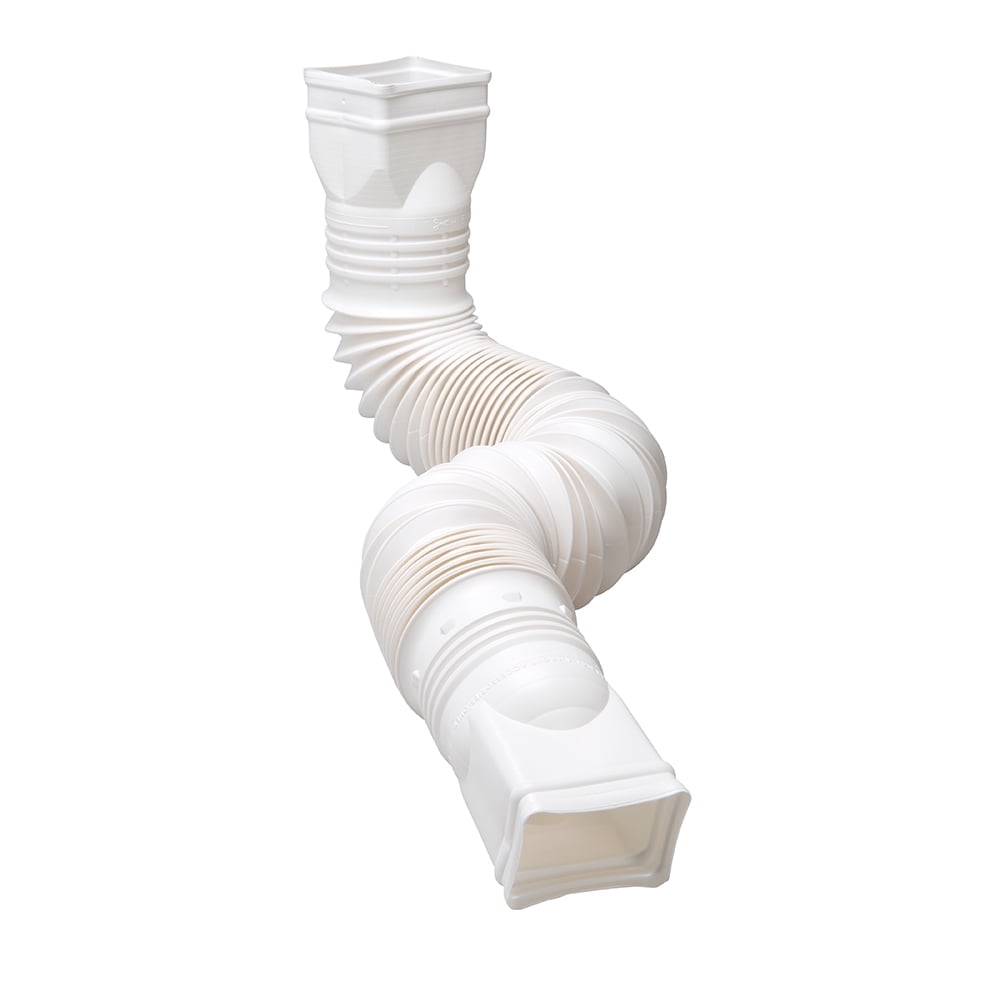


This is the most important part of the project, as it needs to slope downhill and the water needs to go somewhere after it exits the pipe system. For the garage, I used a downspout adapter without a leaf guard since there aren't trees close enough for that gutter to get clogged up. To do this, I cut the black corrugated pipe, added a T, and aimed the pipe upwards to the downspout. Since my in-ground pipe ran right past the garage, I had the garage downspout dump in as well. On the house, I used downspout adapters with leaf guards. In the pictures you can see how I connect the downspouts to my PVC system. I rolled out the rest of the black corrugated pipe in to the remainder of the trench, and backfilled the whole thing. It connects fairly well, so the backfill was enough to hold that in to place. I used a 3"-4" stepdown coupling on the end of the PVC, and put my black corrugated pipe around the 3 inch end. Once the PVC was glued I set it in the trench.

I used 4" PVC and fittings because it was readily available, but any size would potentially work. The fittings I used were a Y for the connection where the two lines connect, two 90 degree angles, and two couplings to connect pipe. I didn't take enough pictures of this - sorry! But I laid out my PVC pipe and fittings into their approximate shape, cut pipe to the necessary length, and used purple primer and PVC glue to connect the PVC parts. Not all parts had slope, some areas were flat, but no parts sloped uphill - good enough for me! I laid the 2x4 flat on the bottom of the trench, placed the level on the 2x4, and every 5-10 feet worked my way from the alley to the house, checking the level as I went.

When I thought I was done digging the trench, I used an 8 foot long 2x4 and a level to make sure there was some slope to the bottom of my trench. This was about the deepest I could go with the slope that I had to work with and the way that my discharge end was going to work. I settled on about a foot of depth, enough to keep it well buried but obviously it will still freeze in winter. I live in Minnesota and the frost depth last year was 7', way deeper than I could ever dig my trench. The deeper the trench you can dig, the better. My goal was to not be able to see where I had trenched when I was done. Re-sodding is crucial if you want the finished product to look natural. I tried to save the grass into big clumps so that I could more easily re-sod at the end of the project. I ended up digging about 120' long in 4 hours. My solution to this problem was to ignore them as much as possible and just keep digging. This will really get the neighbors asking questions, as it will look like your goal is to destroy your yard. Next, whip out the shovel and dig a trench. I didn't have to do that, but I did have a gentle curve in the course to the alley. Plus, since the Corex is flexible, unlike PVC, there is the option to steer around any obstacles. I went with non-perforated because I don't want any tree roots clogging it up and I'm not worried about picking up any groundwater. Is cheaper than PVC, and easier to transport, I transitioned to that shortly after the arms of my Y met up. I settled on this design because I wanted as few angles as possible, so that any speed the flowing water picked up would not be slowed down by making a 90 degree corner. My plan was to use 4" PVC pipe, with fittings, to make a Y-shape away from the house. Water flows downhill so you have to have some amount of slope so the water will run somewhere. While the house sits on flat ground, there is enough slope in the back yard for this project to work. I wanted a good way to get rainwater from the roof as far away from the house as possible. Before installing gutters, rainwater from the roof fell to the ground and didn't flow anywhere before soaking in to the soil - hence, large spring rains lead to water in the basement. The house sits in the front half of the property, which is flat. The rainwater from the back half of the property slopes down to the alley, which has a storm sewer.


 0 kommentar(er)
0 kommentar(er)
